Share This Article
This article is a translation of the original interview
The tattoo industry has had a prominent development in recent years. It is becoming more and more common to find tattooed people in all professional fields and in all age ranges. This blossoming industry has seen several projects and studios emerge that have challenged the traditional canons of tattooing, offering a wide range of styles for all tastes.
Designer Daniela Vendramin is one of the intradermal pigment artists who has transformed the industry at Arrecife Studio, an oasis of tranquility in bustling Mexico City.
Vendramin has created her own style, fusing rigorous and methodical industrial illustration with the light textures of the plant world, a successful mix that has managed to convince even the most skeptical.
SciGlam: How does an industrial designer become a botanical tattoo artist?
Daniela Vendramin: It was never my goal to become a tattoo artist. Actually, I held tattooing in very low esteem. It seemed to me to be something that was probably easy, and I thought that it would just be one more hobby of the many that I had. But that wasn’t the case, it was—and still is—something extremely complicated. I think that’s why I fell so in love with tattooing.
As for botanical motifs, I introduced them when I was working as a botanical scientific illustrator at the Academia de San Carlos. There, I had the opportunity to work for a year with taxonomists and morphologists from the Institute of Biology, which fueled my obsession with plants; and, almost automatically, my drawings found a new canvas.
I found common points between engraving, botany, and tattooing that still fascinate me to this day.
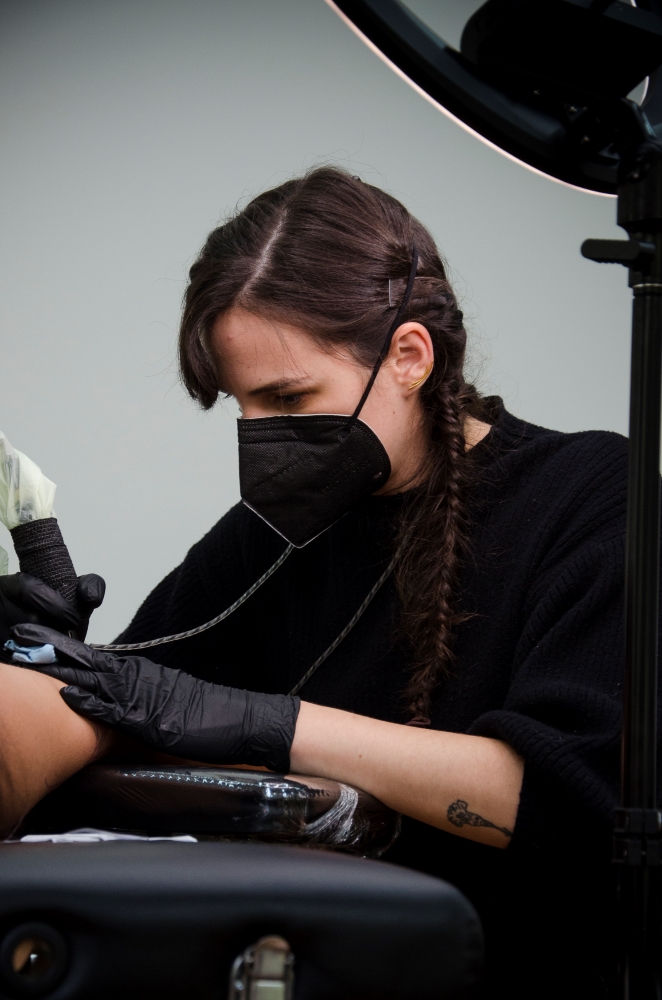
As a tattoo artist, you are generally restricted to doing what the client asks for and these are not typically open projects. In this sense, which are the projects that excite you the most and which are the ones that excite you the least?
Botany projects always excite me the most. If there’s one thing I’ll never get bored with, it’s plants.
I also like to tattoo some animals and objects. What I don’t like is the monotony. There are certain animals and plants that appear too frequently in the collective imagination, for example, hummingbirds. I love them, but there are thousands of hummingbird tattoos because in Mexico people associate hummingbirds with grandpa’s garden. They have that nostalgic side—which I also identify with—but it gets a little tiring.
I found common points between engraving, botany, and tattooing that still fascinate me to this day.
My ideal project is one in which I am given the freedom to create a plant. For example, a complete arm with a specific species of the Citrus genus. From there I can propose elements of the seeds, fruit cuts, flower cuts… I can even tell a story. That is my ideal.
When I was working as a scientific illustrator the act of taking a certain species and taking it apart as I did with industrial design objects seemed like the most beautiful thing to me. Now, every time someone asks me for a botanical species, I have all the methodological bases to dismember the pieces and illustrate them as a whole. If it is a daffodil, I see the shape of the petals, whether it has a bulb or not, what the stem is like, and what habits it has. Plants have endless possibilities.
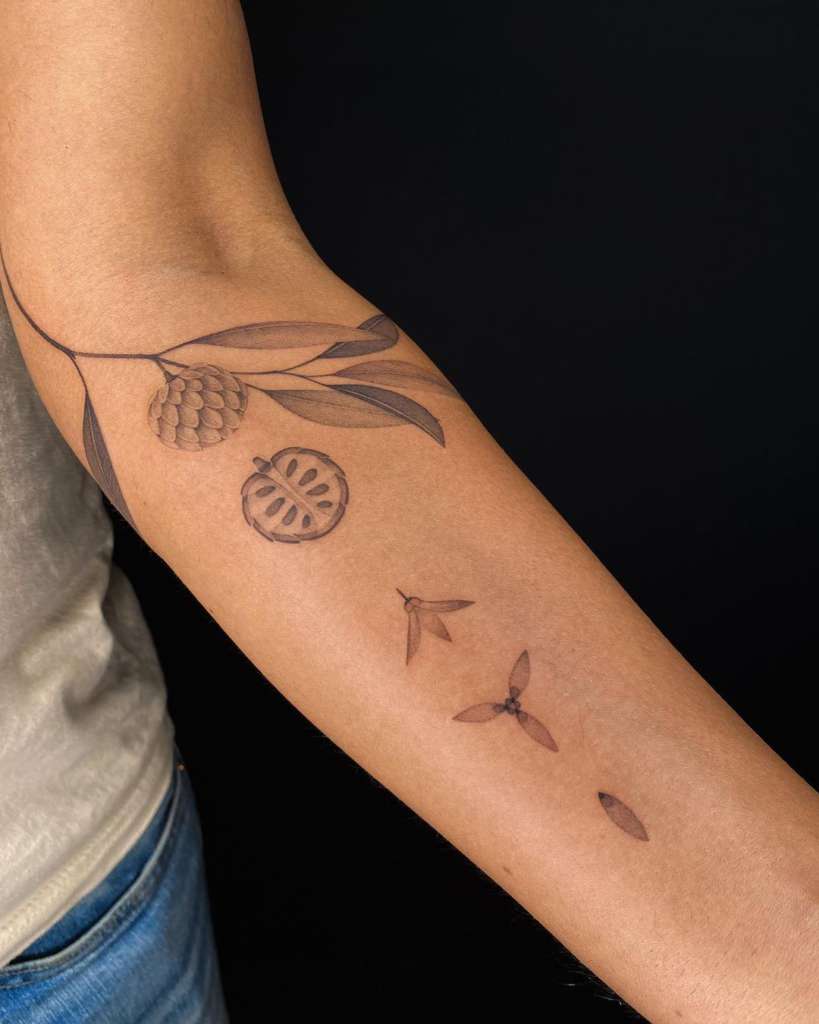
On the other hand, having collected everything I know about plants, some curious facts and the little I can explain about them, has allowed me to pass that knowledge on to my clients. That is also exciting to me.
What motivated you to create Arrecife Studio?
Arrecife is the result of my very personal view. In the past, tattoo studios were dark; they represented some kind of fear. When I started working, I never went to those studios because I didn’t feel that they could offer an environment that would promote my creativity. That’s why I made my own space.
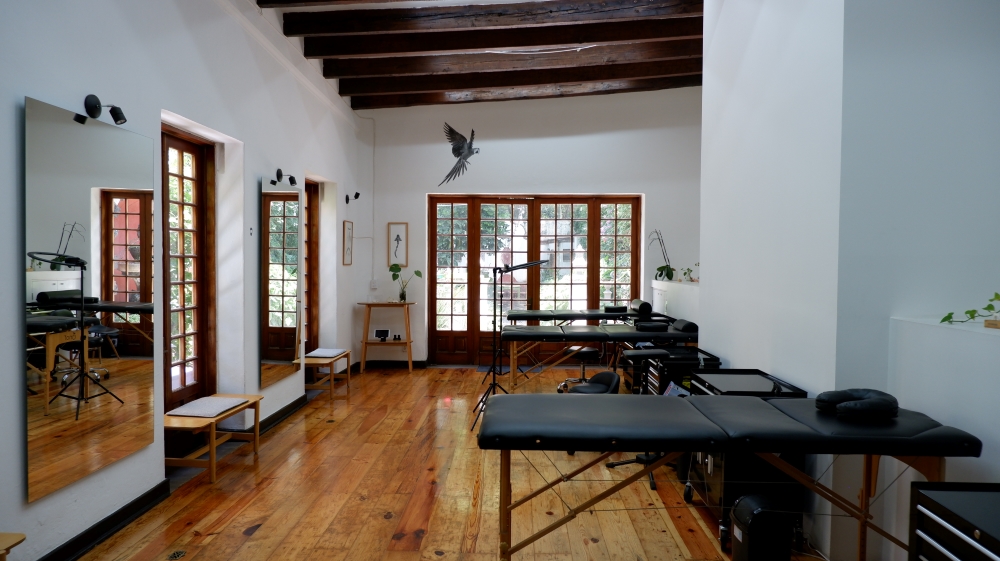
As the studio grew bigger, I tried to integrate more chill spaces by using natural light, plants, and music: bossa nova and music from the ’80s… The idea has always been that the space must help the creative process, and that it must provide a sense of safety, empathy, and happiness to our clients. A good combo can reduce pain and stress, and increase confidence, not only from the tattooer’s perspective but also from the clients’ perspectives.
My generation has done amazing work eliminating prejudices around tattoos.
We are also interested in making Arrecife a place for preservation. There are a lot of animals and plants in the studio. That helps us feel more connected to nature and turns Arrecife into an oasis within the city. Believe me, you can feel it!
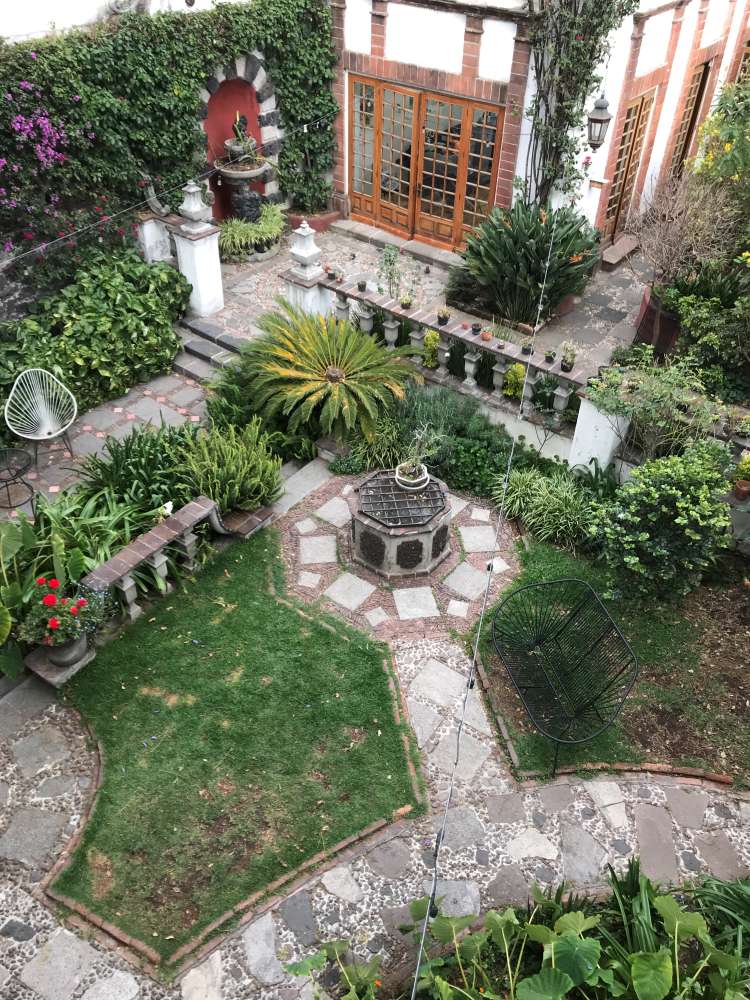
It’s true, it does feel that way! And the outreach efforts are also very palpable…
Absolutely! Without being too erudite, we try.
Currently, the tattoo industry is more profitable than other plastic disciplines and I think that it’s important to give a little back somehow. This is why we organize thematic days, let’s say, pollinizing species from the Valley of Mexico. The profits we make that day are donated to different foundations and associations that work on the preservation of such species. This way we not only inform the public about these species but also about the groups that work for their preservation. It’s our way of giving a little back to society. Although, as we grow Arrecife, it has become increasingly difficult to keep that same mentality among all the tattoo artists. But of course, we still try to maintain this initiative as a pillar of our studio.
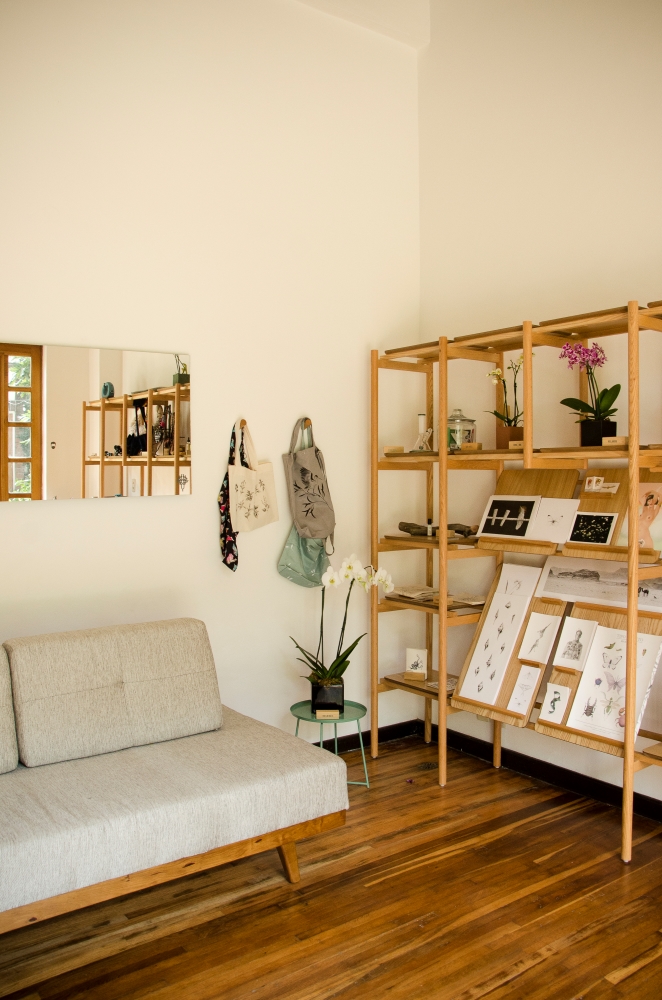
Your style is very different to what we normally see in the tattoo industry. Where does your style come from? And what can you say about the technique?
My style is a faithful imitation of nature. Generally, tattoo artists use well defined lineal styles, with more fills and solids. Nature, however, offers more transparencies, changes in textures, and lighter structures. Curiously, as a rule scientific illustration tends not to have contour lines—they make objects lose volume and realism. By avoiding the use of contour lines, I maintain object volume and movement.
Before 1990, tattoos with prominent lines and filling were preponderant. If you didn’t tattoo that way, it wasn’t considered a good quality tattoo—as if no other technique would be valid. The needles and the machines were also different. But after the ’90s, the industry welcomed many plastic artists. It was only after that that more delicate styles and aesthetics emerged, and this attracted new clients.

My technique has evolved over the years; I started doing thinner lines, dotted lines, and defined points. And, almost accidentally, I managed to create pointillism with a whipping style.
I currently draw from a sensu stricto point of view; I do some research on the morphology of the things that I am going to draw and I do a geometric summary of the object. My tattoos are illustrations with scientific elements after all, which makes them a little more realistic.
Regarding the technique, I mainly do pointillism with a little bit of under-shading, which allows me to obscure the skin a little without losing its texture or color. This way, I can avoid the use of marked lines.
Based on the evolution of tattoo styles, one could almost tell the age (or generation) of tattoo artists or even their clients just by looking at their tattoos.
Absolutely! But sometimes it is very random, though. Strictly related to tattoo artists, more than their age or generation, you can notice their background and when they started working. If they started a long time ago, they still carry many of the customs and techniques of the old school. Although many artists have already adapted their style to new interests.
Newer tattoo artists have styles that are very soft, especially those who do micro-realism. But there is a trend now to “return to the past,” reviving old-fashioned techniques and styles. This has led to strong arguments between tattoo artists. The problem with aesthetics is that they are not objective but rather subjective.
Following on that thought, there is a debate between those who claim that tattooing is not art and those who say that it surely is. What is your opinion on this?
It is a complicated subject because we would need to discuss art, and again, art is subjective. There will be art genres that some critics will consider true art and others that will not be considered that way.
I personally think that there are tattoos that are definitely art and others that are not. There are some tattoo pieces that I don’t like, and I would never have on my body, but that you can clearly acknowledge as art.
Tattooing meets all the criteria that allow a craft to be defined as artistic representation. It involves working a material, such as the skin, with tools that are variable: needles, ink, machines, etc. I would like to call it art, but defining it as art also turns it into a question of the value of the tattoo as an art piece. Is that why tattoos have increased in value? Is the value of that tattoo piece valid?
Tattoos are not something we can preserve […] There are ways to preserve skin, but then you enter into a strong ethical dilemma.
Many people think about art as an evaluative representation of humanity’s temporal situation. Art has fulfilled this function for centuries. But tattoos are not something we can preserve and they will not serve the purpose of explaining the temporal situation of humanity. For all these reasons, I wouldn’t define tattoos as art because at the end of the day they perish. There are ways to preserve skin, but then you enter into a strong ethical dilemma.
To wrap up, where do you see the tattoo industry in 20-30 years? And where do you see yourself?
The industry will continue, that is a fact. My generation has done amazing work eliminating prejudices around tattoos. We will be seeing more and more people with tattoos in all public spheres; tattoos are no longer regarded as something negative, now they’re something common.

Personally, I’m not sure about being a tattoo artist my entire life. It is physically demanding, and I am not sure how long I will be able to continue. The frequency and duration of the sessions, the areas that can be tattooed, and many other factors are sometimes limited by the physical condition of the tattoo artist. Over time, we can suffer from tendinitis, herniated discs, and other pathologies derived from the type of work we do.
But more than the physical toll that it has on me, I think I won’t be trending in a few years. Even though my style will keep changing and keep improving, I think people won’t want my work. I am currently at a point in my life where I can understand the needs of people because I am contemporary to the people seeking tattoos, but I doubt that by the time I’m 70 I will keep creating things that people in their 20s and 30s will want. What will I do by then? I honestly don’t know; little things make you change paths every day.
If you could ask a scientist of any background a question, what would it be?
What are the abdominal divisions of beetles for? Other insects use this anatomical structure to make sounds, but beetles don’t.
Waiting for an answer…
